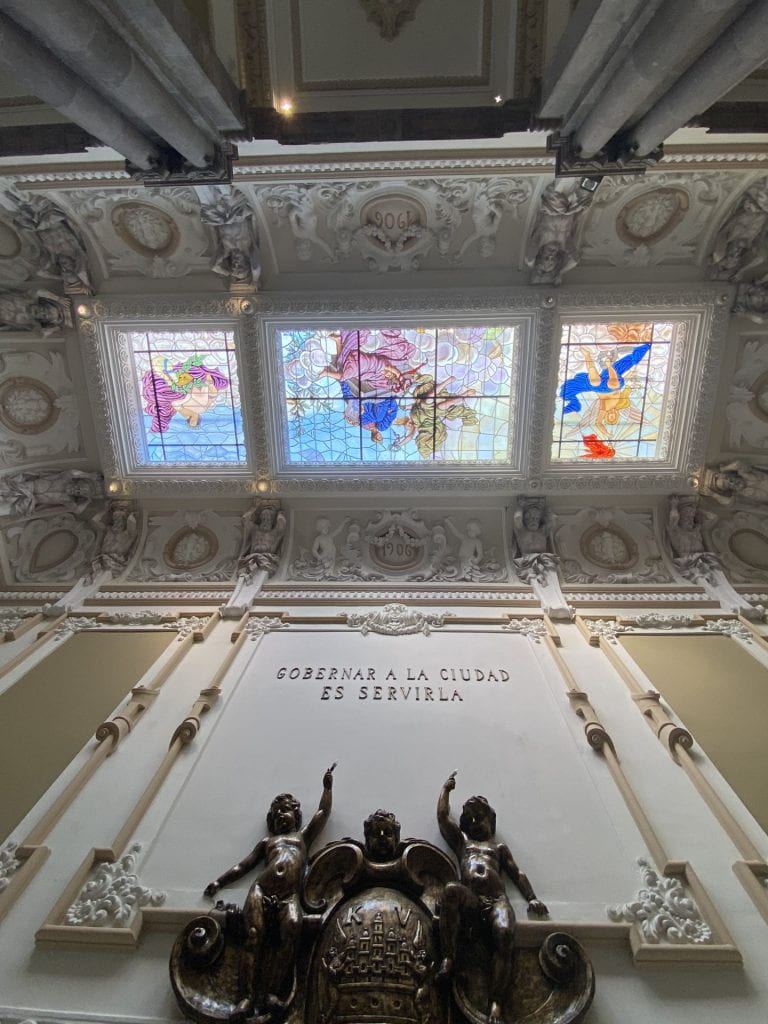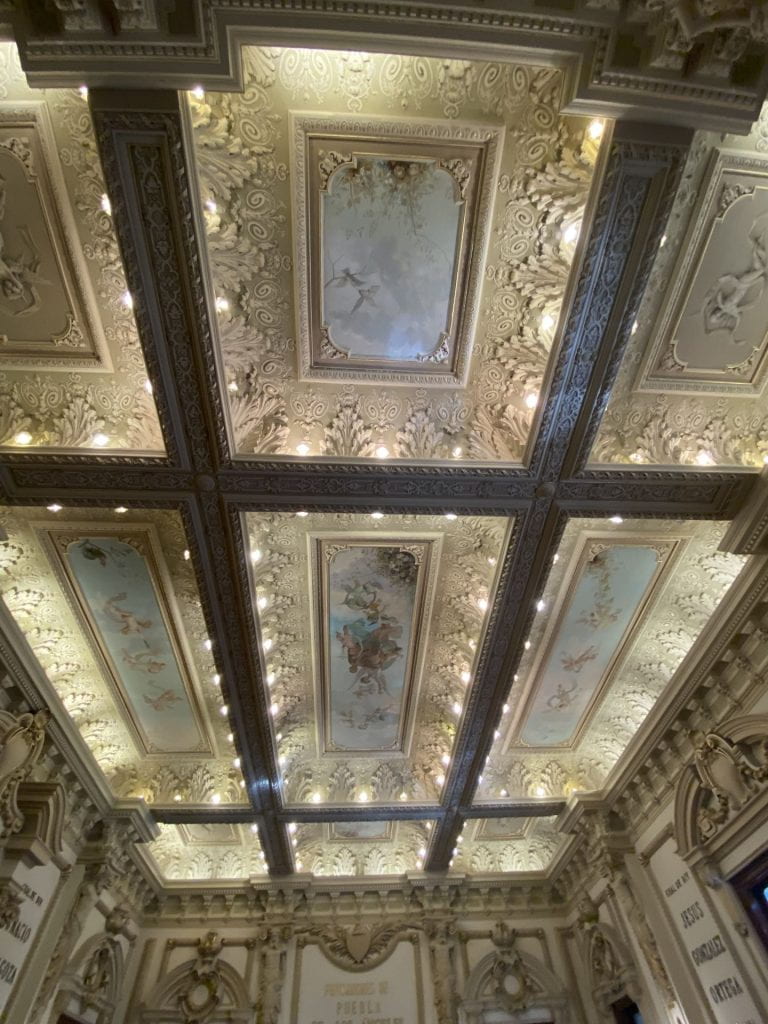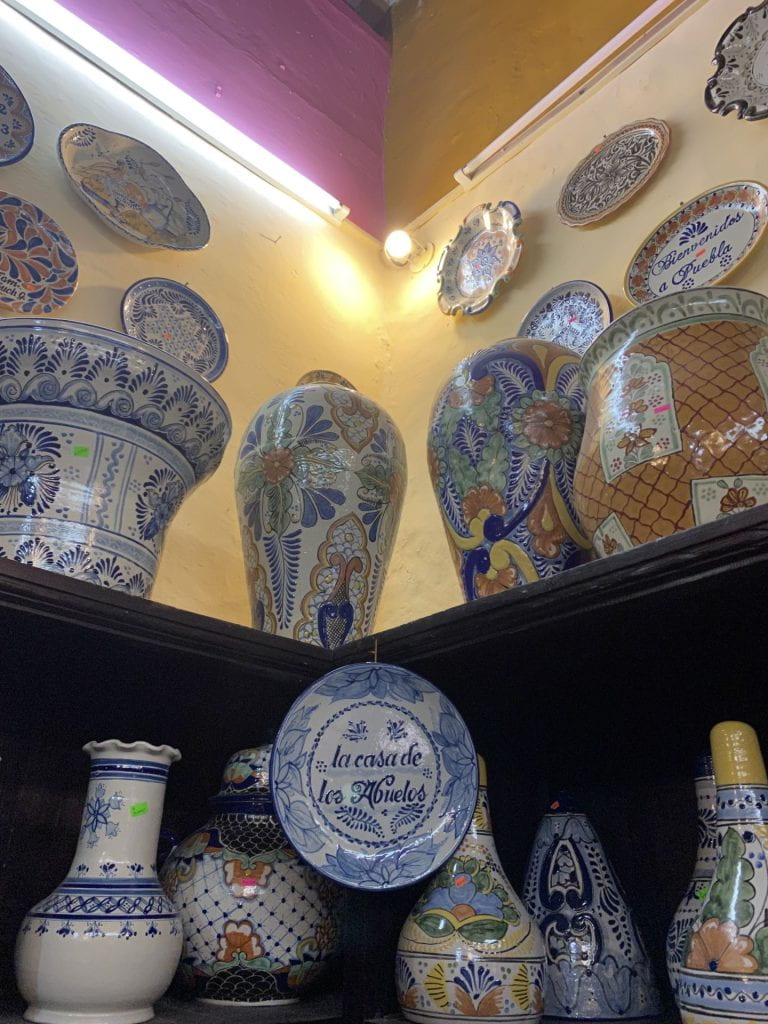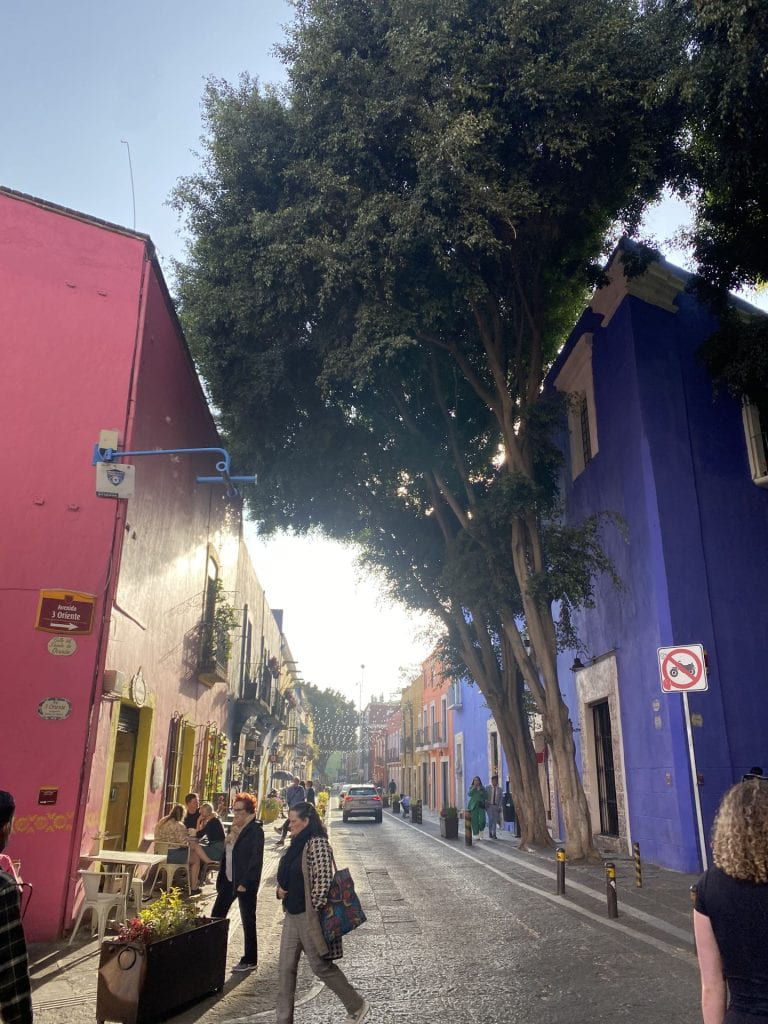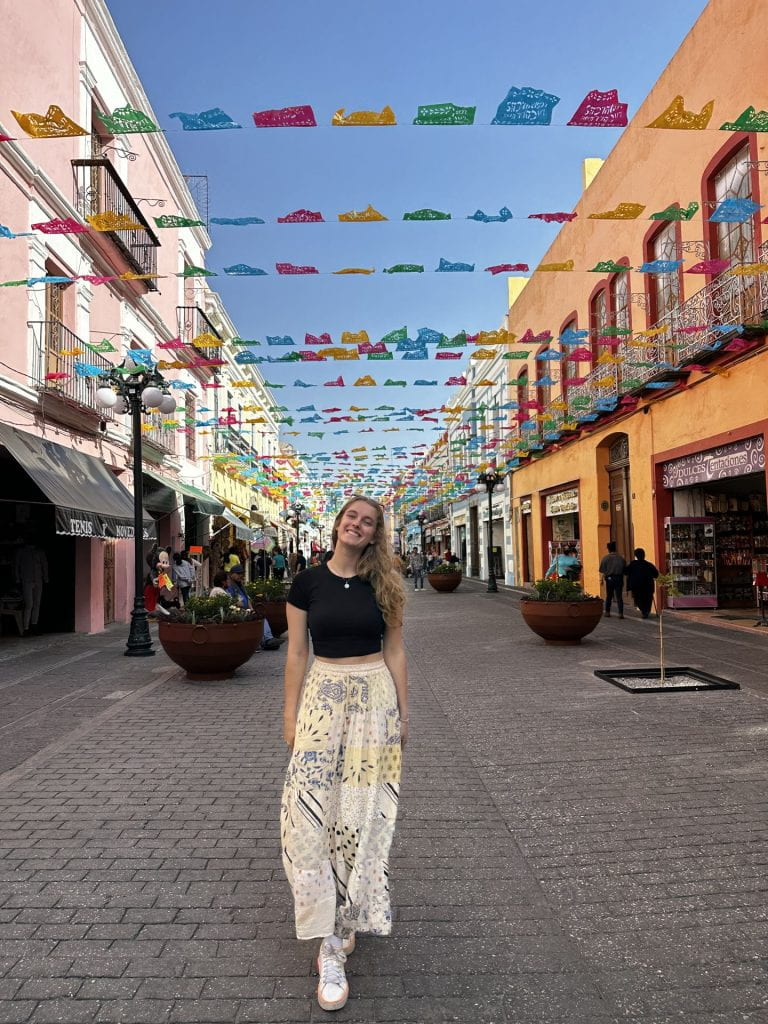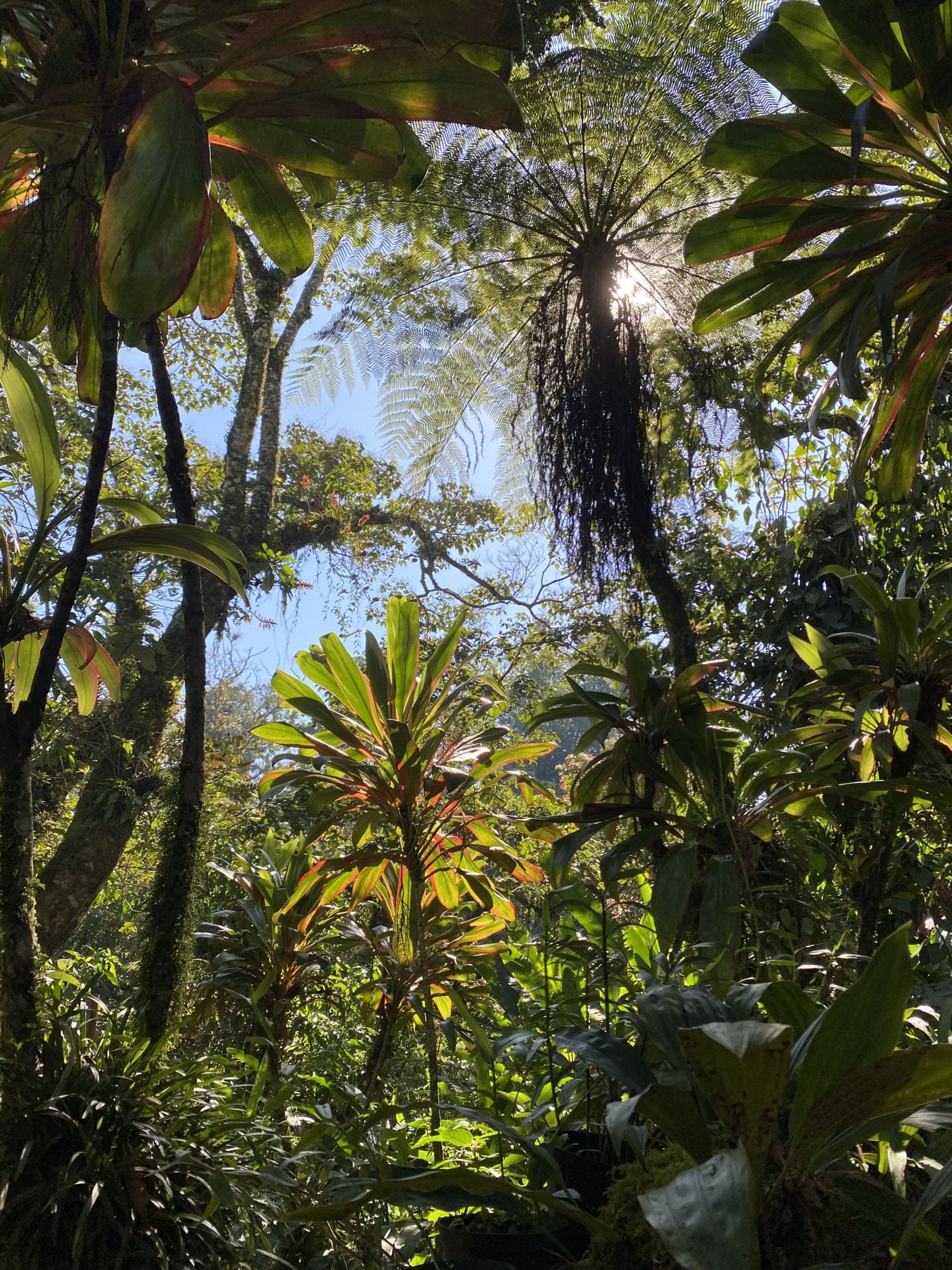Our last week in Mexico was in the beautiful Cuetzalan, staying with an indigenous collective, Sociedad Cooperativa Tosepan Titaniske. Our days were jam-packed, so this blog will be a day-by-day account so that I don’t miss anything!
Day 1
Our first day started at 7 am, with a 5-hour bus ride with our two IBERO organisers, Natalia and Andrea. It passed quickly, as we slept most of the time and had pretty scenery to look at the rest of the drive! Before going to the hotel, we had a waist-looming workshop with Pedro. He showed us how they pick and process cotton before using a waist loom to create different materials and garments. We then got a chance to try looming with the easiest materials – Pedro definitely made it look easy! There was a certain technique that was tricky – you had to cross the strings a different way depending on which way you were threading. It was also hard to make sure that everything stayed in the right place. After about an hour, we ended up with little mats we could take home, which we were stoked with! It takes a master ‘loomer’ 70-80 hours to make one shirt, and, as we experienced, it is very physically demanding. It’s easy to see why handmade products are so much more expensive! Afterwards, we drove to our hotel, which was stunning. Set amongst the jungle, all of the rooms were made traditionally with stone and bamboo.
After lunch, we listened to a presentation about the history of the cooperative whose hotel we were staying in. It was started in 1977 to improve the local community’s way of life and well-being and become more independent from the government. Their main goals are:
- Create a sustainable home and satisfy their nutritional needs with healthy food.
- Have diverse business interests.
- Continue to build the capacities of the community and of individuals.
- Revitilse the culture and language of their two indigenous groups, masewal and tutunaku.
- Create a space that benefits men and women equally.
- Take advantage of their natural resources in a rational way to create better conditions for their children and grandchildren.
Within their community, there are many different branches: the hotel; production of organic plants; growing produce; their own bank and loan system; production of bamboo; ecotourism; health and wellbeing services; and an education system.
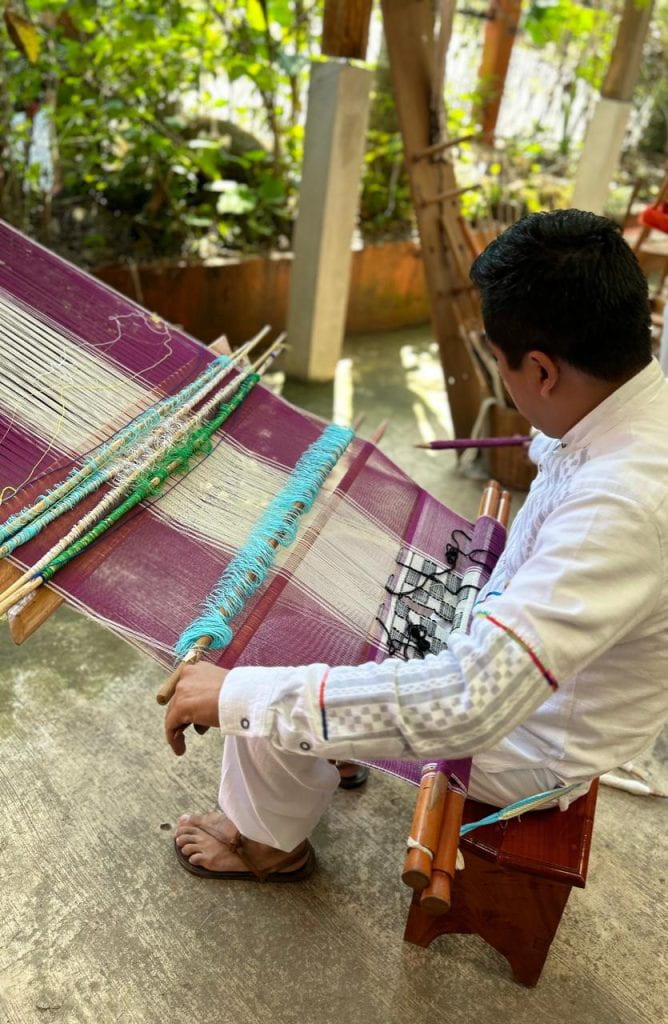
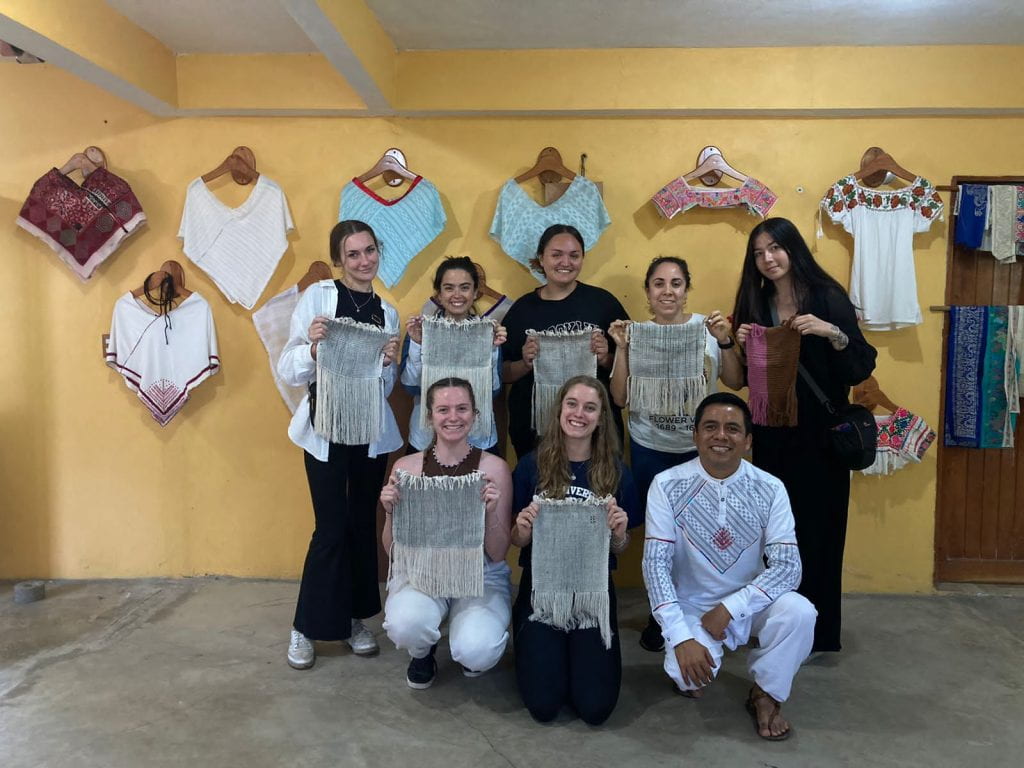
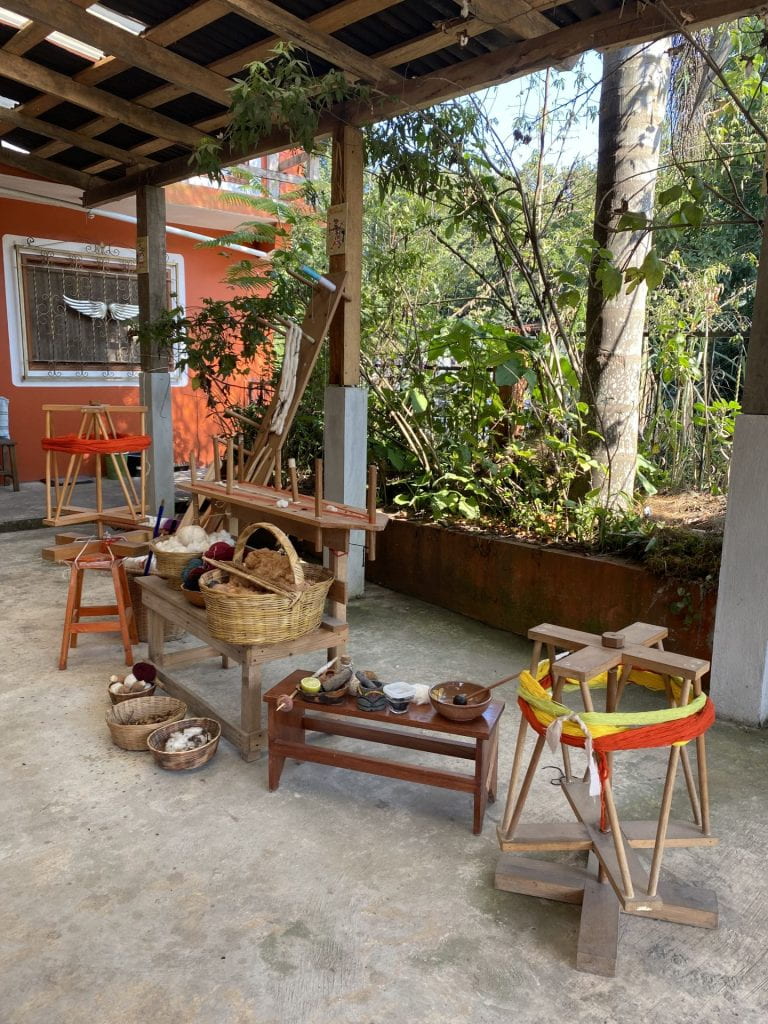
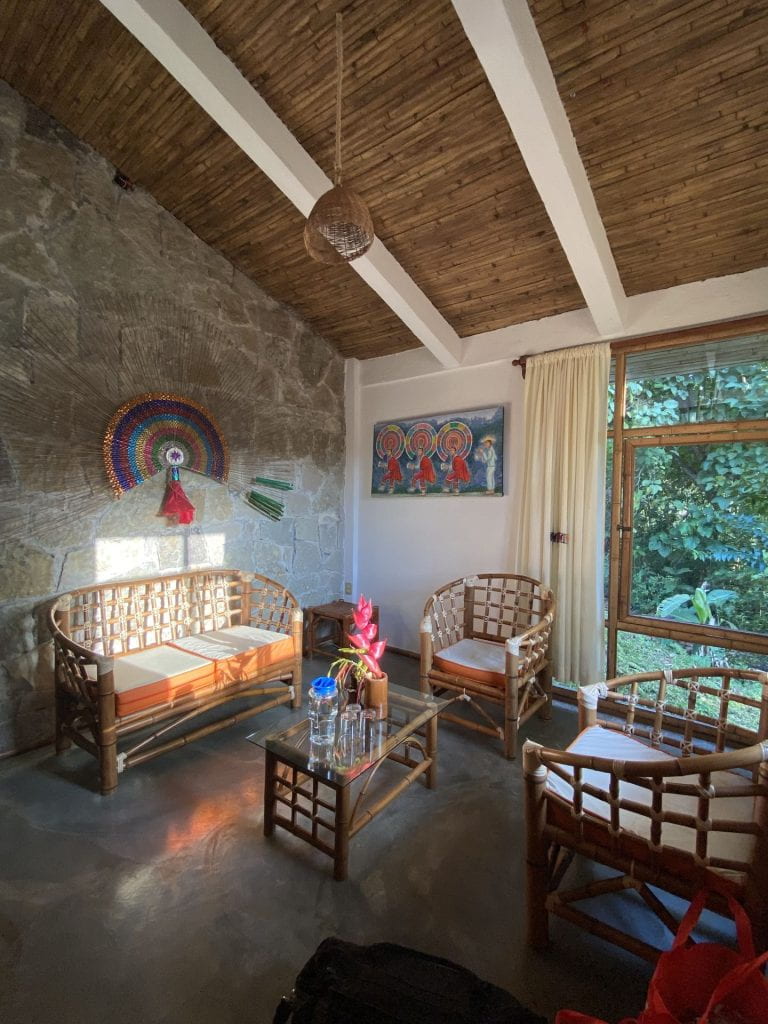

Day 2
After a breakfast of frijoladas – bean tortillas covered in beans – our first activity of the day was a tour around the collective to see the different branches. Their school currently has 80 students, and they are trying to develop it further, but it is taking a lot of resources. While education is what they consider to be the most important, they also have to have a balance of income and expenditure within the collective, so they can’t develop it as much as they would like. We also saw a hall/auditorium that they are currently building to hold group meetings, share ideas, and hold performances. This is being built completely out of bamboo and clay by local community members. While they had the option of building it with concrete, it would have cost about the same and wouldn’t’ve provided the same amount of work for locals. Even though the traditional way takes longer, it matches their values of sustainability and community support more than concrete would, and the use of lighter materials means both men and women are able to work on the project equally. I thought this hall was an amazing example of how the cooperative worked and how it upheld all of its values. After that, we headed to the botanical gardens and got a tour around, showing us a lot of the local plants, including over 150 types of orchids.
Following the tour, we were taken to a branch of the cooperative where they grow coffee, cinnamon, and pepper plants to sell. This is all done organically. They make their own fertiliser with leftover coffee pulp, goat’s poo, milk, yeast and other things that are then left to ferment. They leave it covered in the sun for 30 days before it is ready to use. They grow all the plants from seed; coffee plants take 45 days to get to good seedling height and then are sold at 3-4 months old. After that, it takes about 2-3 years before they are old enough to start producing coffee seeds. Only 3 people work there, and this year they have a goal of producing 250,000 plants!
Our next activity was at Magda’s house. Magda showed us around her garden, which was very large and on quite a steep cliff. She had all kinds of plants: cinnamon, avocados, lychees, lemons, limes, oranges, bananas, tomatoes, chillies, mint, coffee, pepper, and a vanilla vine. It was an example of how the land can be used both sustainably and productively. She also showed us her many beehives that were kept behind her house, and opened up a hive so that we could see inside. The bees that most people keep are native Mexican bees that were domesticated by the Aztecs. They don’t sting which makes them a lot easier to look after and extract honey from. The hives are made of two ‘jars’ put on top of each other; the bottom jar is where the bees live, and the top is where the honey is stored. Each hive only makes about a quarter of a litre of honey a year, so families have quite a few hives each. We got to try some honey, which was quite runny and really citrusy, quite different to the honey we have here. After the tour, Madga’s family provided us lunch. We got to have a go at making tortillas, which required a certain technique that we didn’t quite have. Our misshapen circles provided a lot of amusement! Still, straight off the hot stove, they were amazing, especially with a sprinkle of salt.
After a nap back at the hotel, we learnt how coffee was made! We also got to roast and grind our own coffee which was pretty cool. For a medium roast, we kept it over the heat for about 15 minutes. It was interesting seeing the labour and effort it takes to make just one cup of coffee.

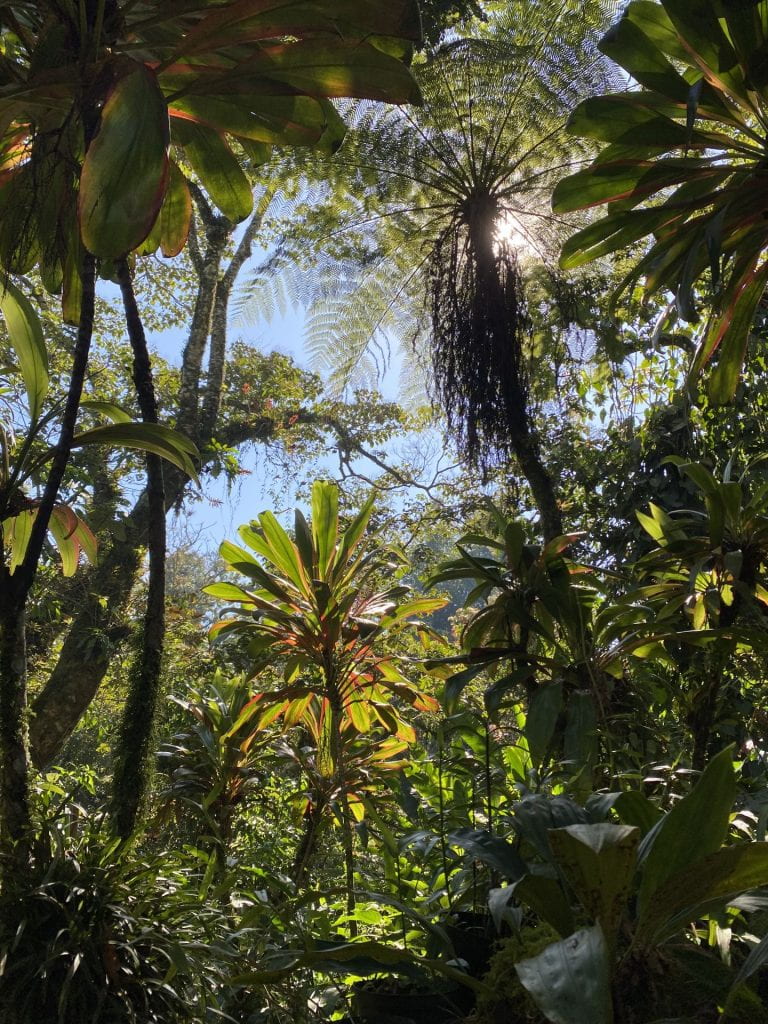
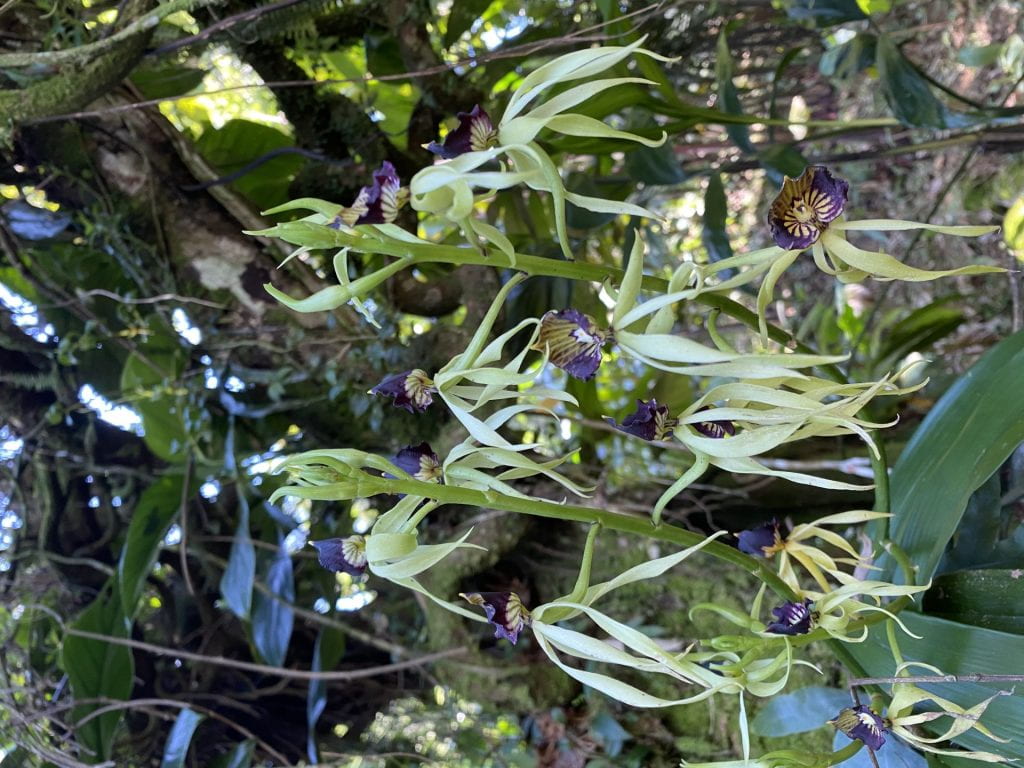
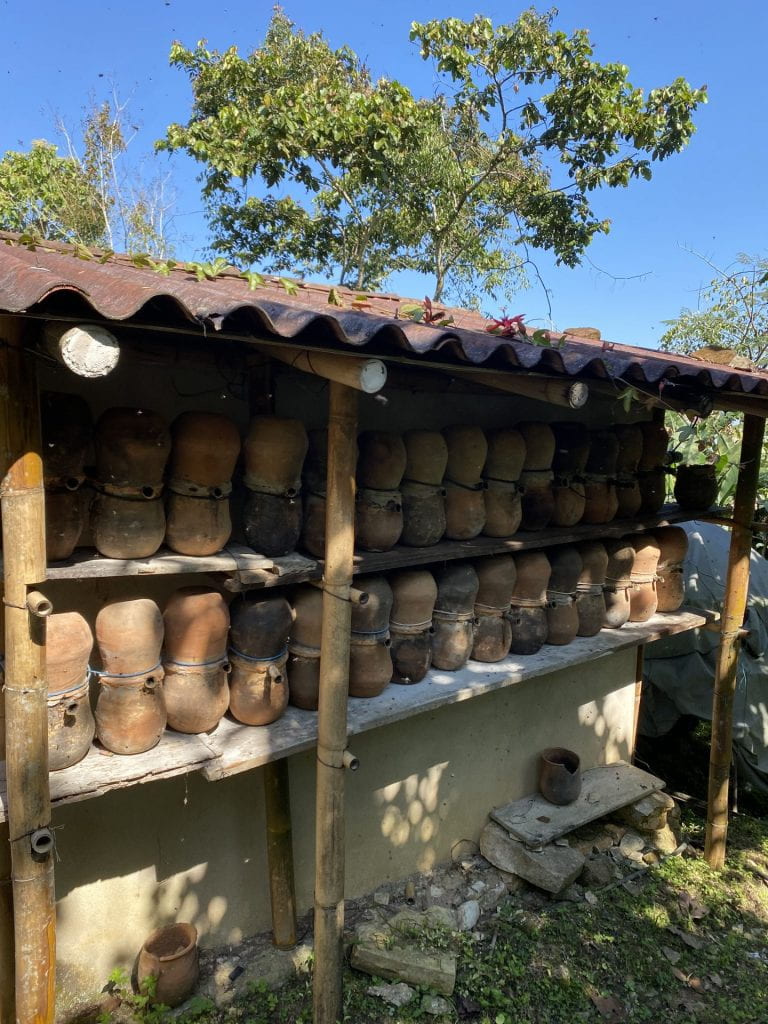
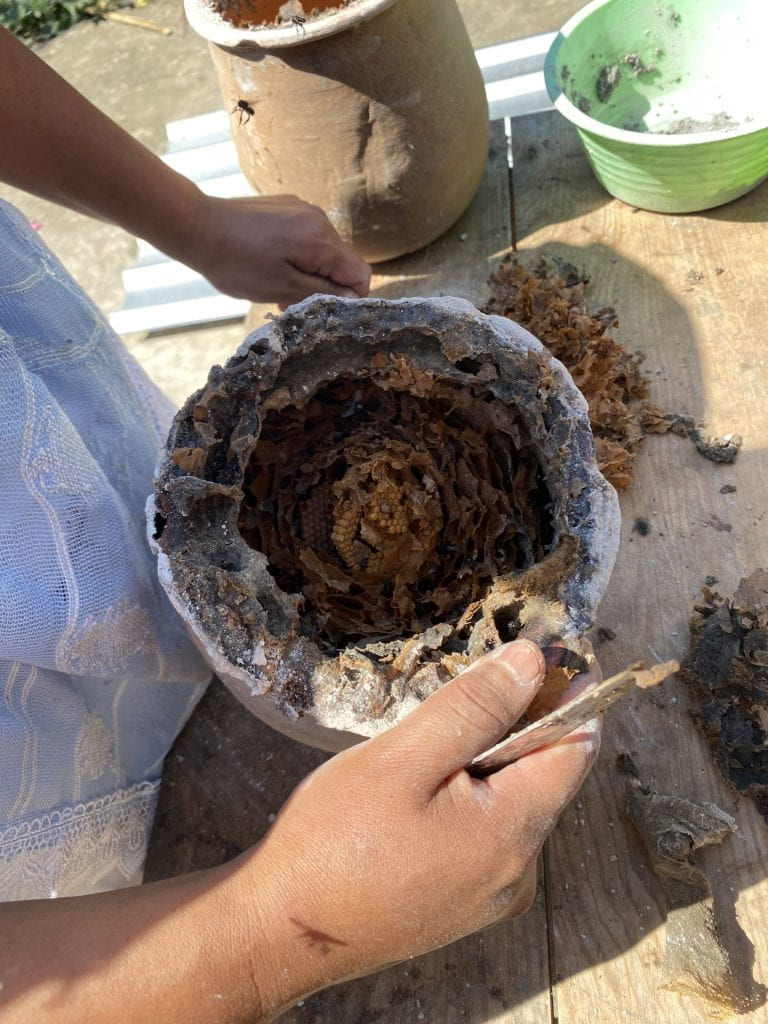
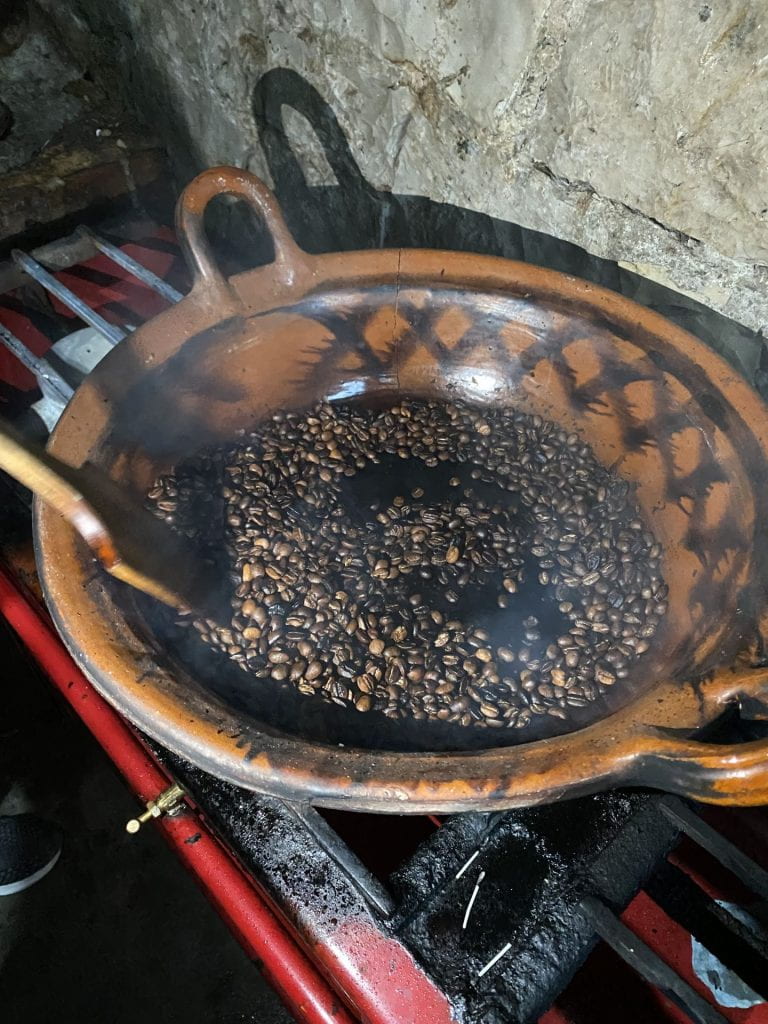
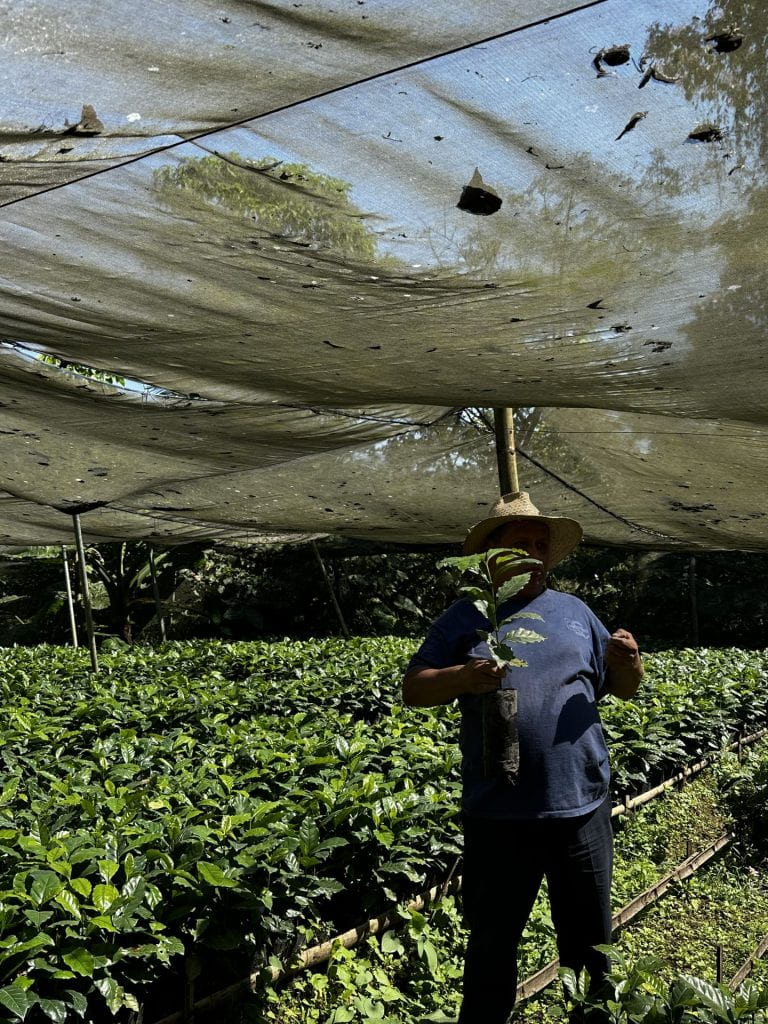
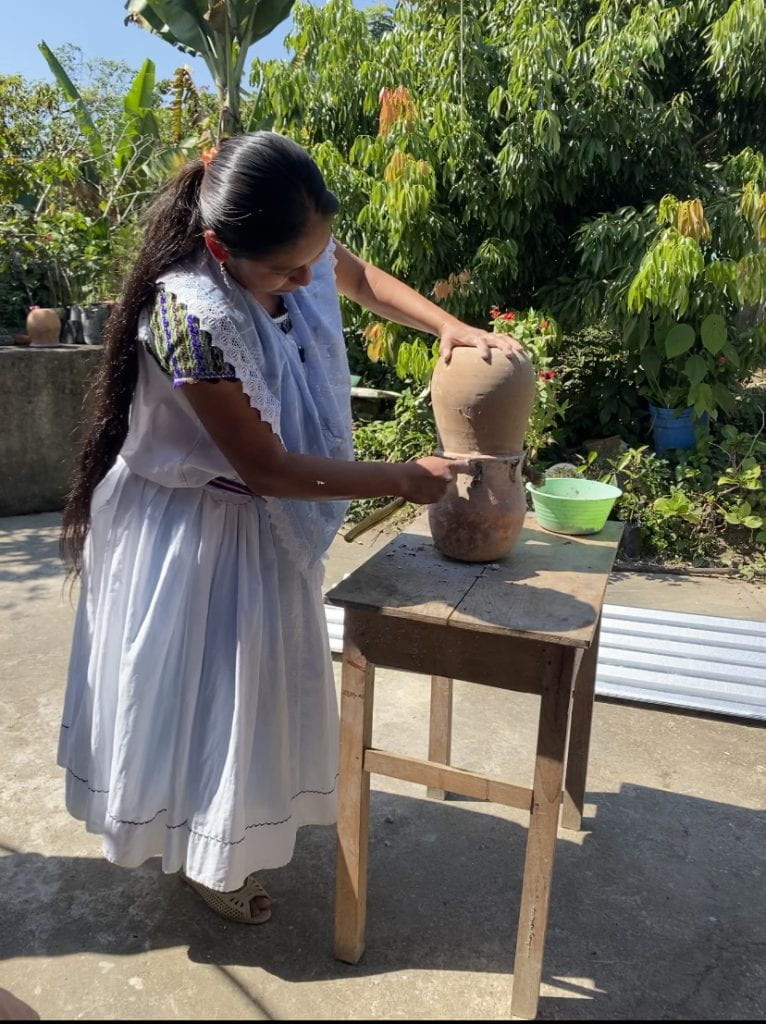
Day 3
Our day started with a bush walk to two beautiful waterfalls that we had the chance to swim at. The bush was really similar to that in New Zealand, and although the water was quite cold, it was super refreshing! After going back to the hotel to change, we went to see how cane sugar was produced locally. They showed us their garden, and we walked to their sugar cane plantation. We cut down a cane and then took it up to the production area. The cane is pushed through one side of a machine and comes out the other side (the mechanism is usually turned by a donkey). The ‘juice’ produced flows down a pipe to a pot sitting on top of a fire pit. It then has to reduce for 8 hours so that it becomes the sugar brick. We got to try the sugar liquid, and it was definitely very sweet! We had lunch at their house, which was soup, a spicy, cinnamon-y chicken stew that was delicious, and then roasted pumpkin cooked with molasses. It’s really cool getting to try so many different dishes, but also sad because I know I will never be able to replicate them! The rest of our afternoon was spent just relaxing, which was lovely.
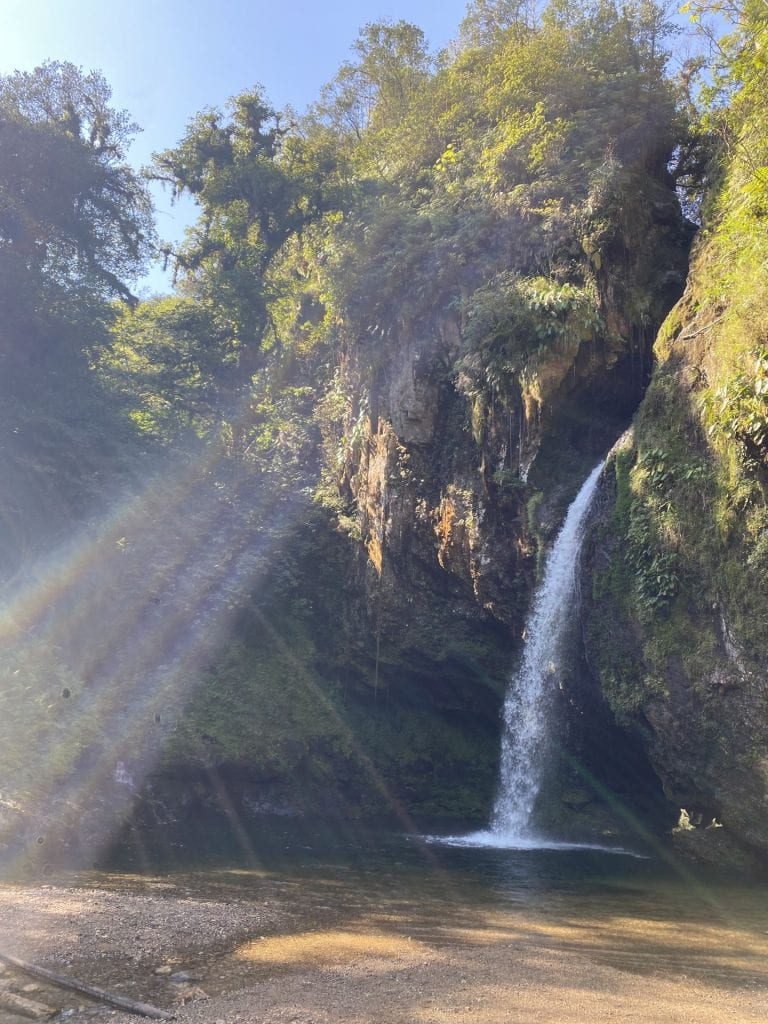
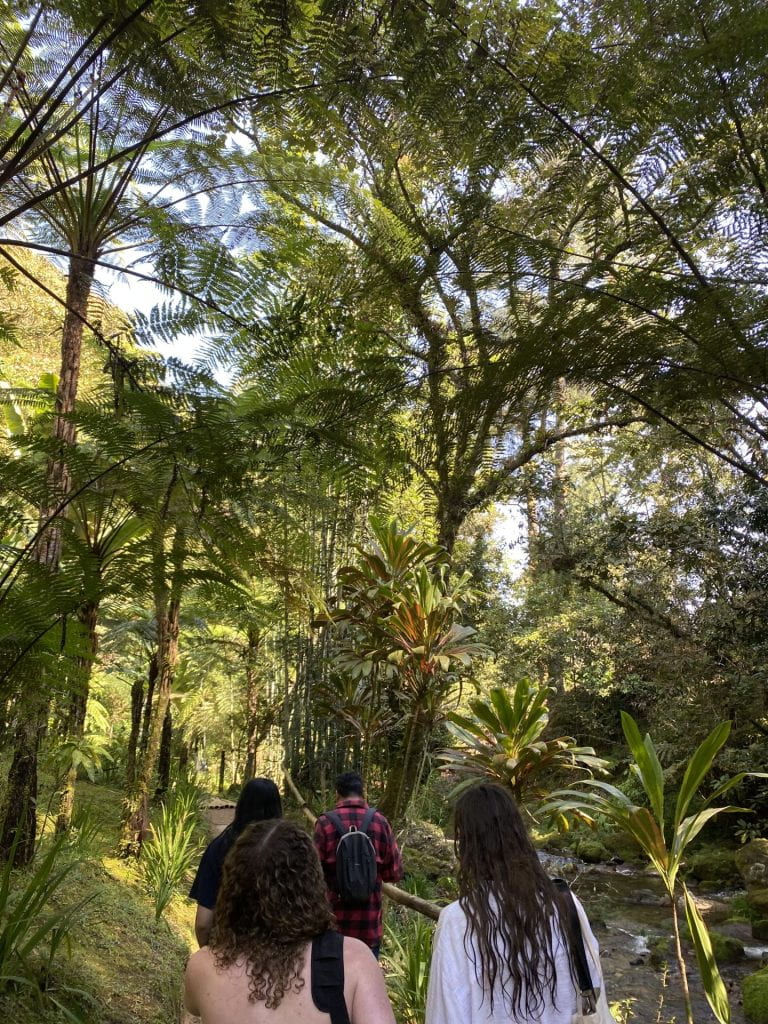
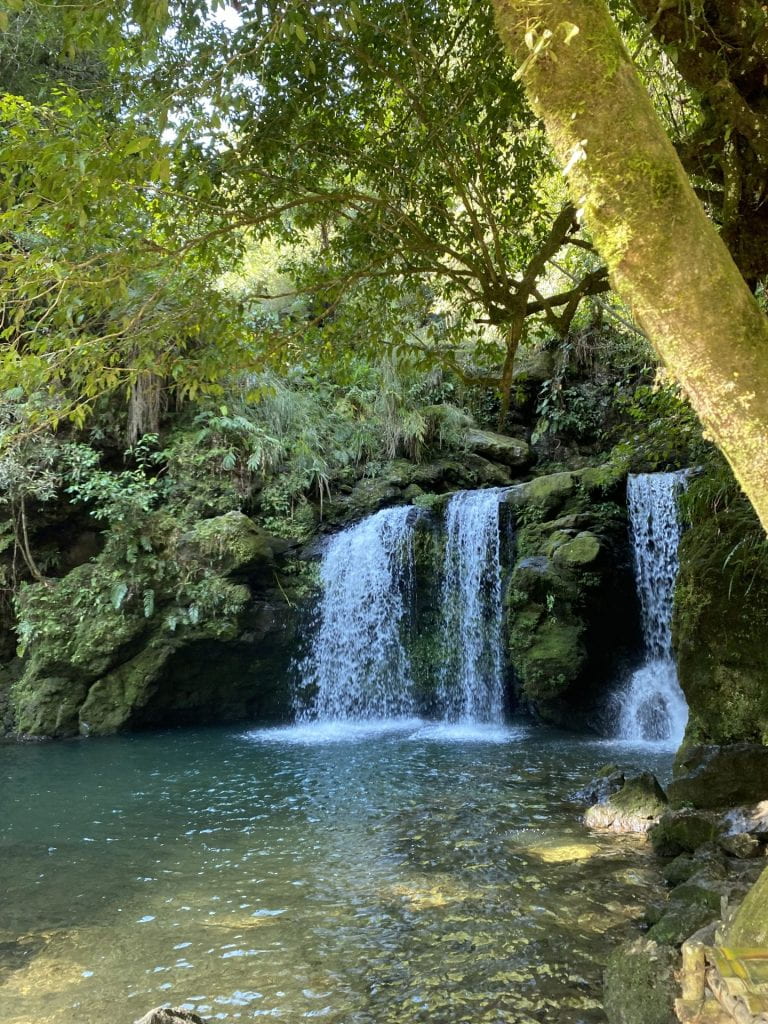
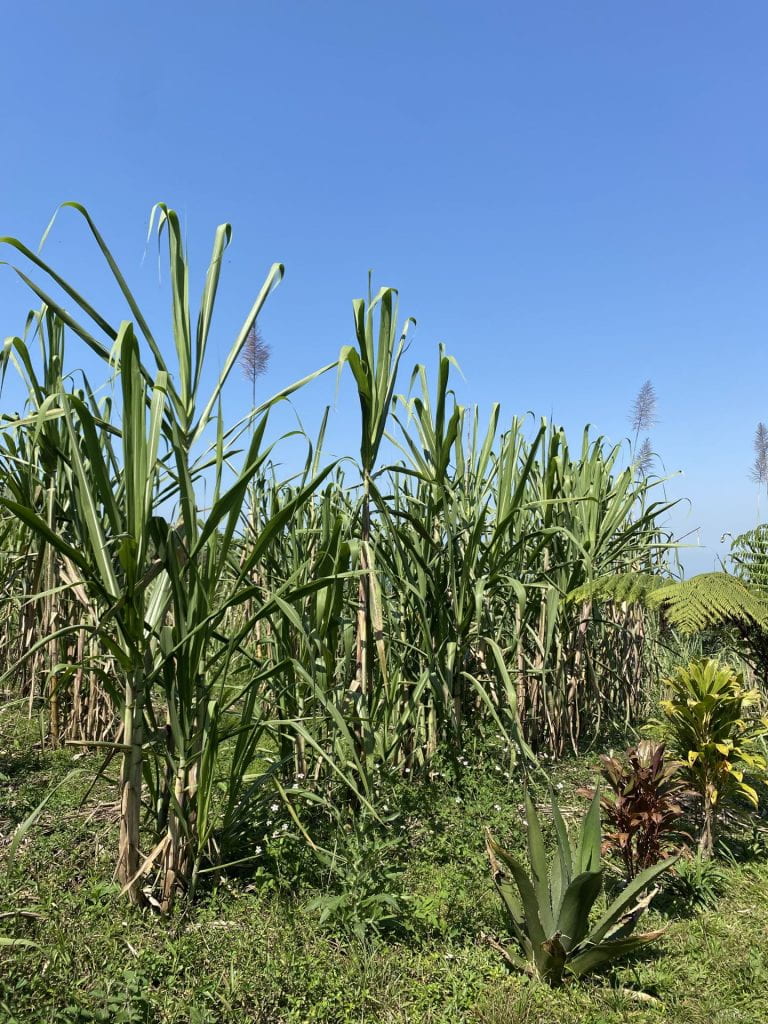
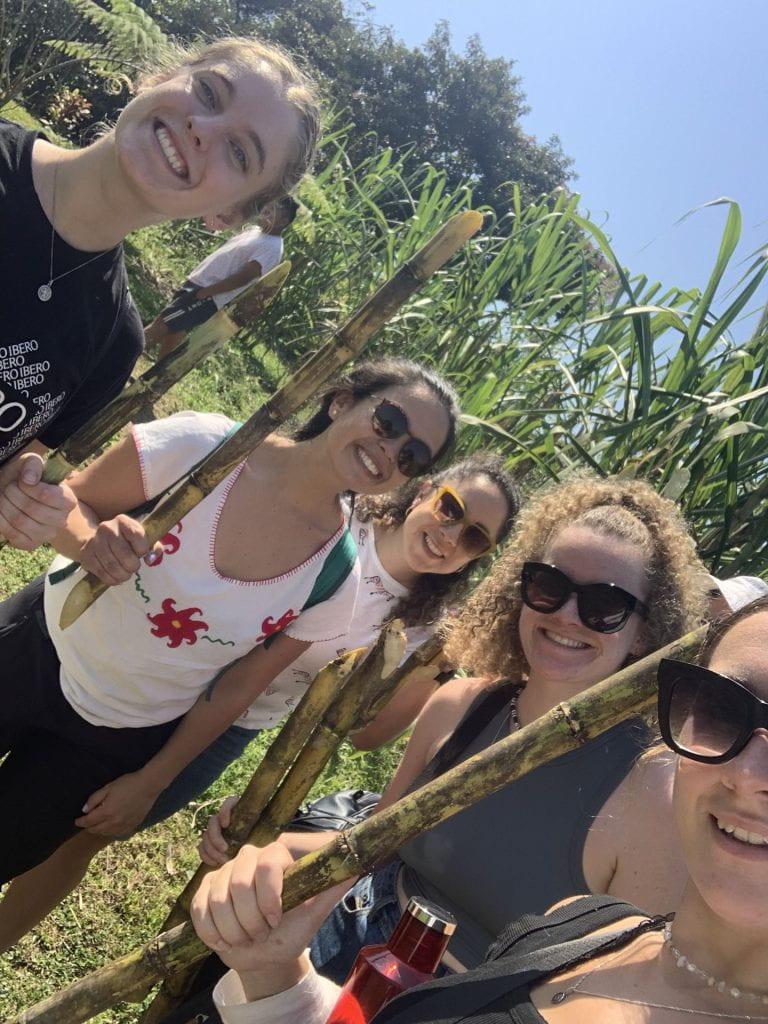
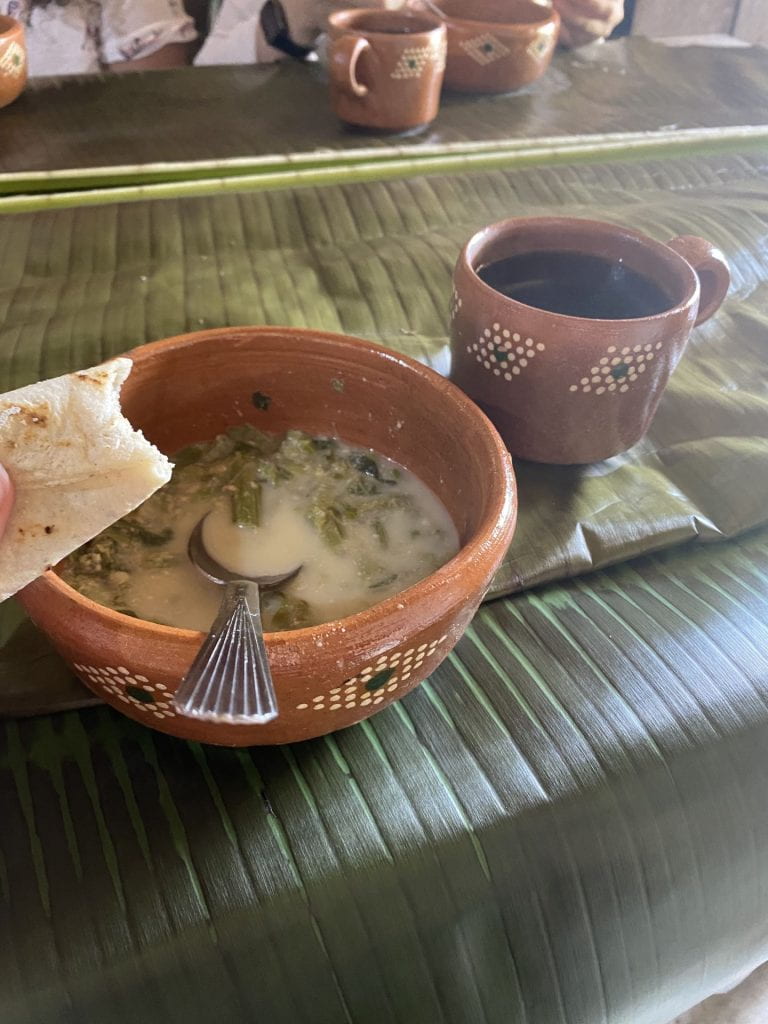
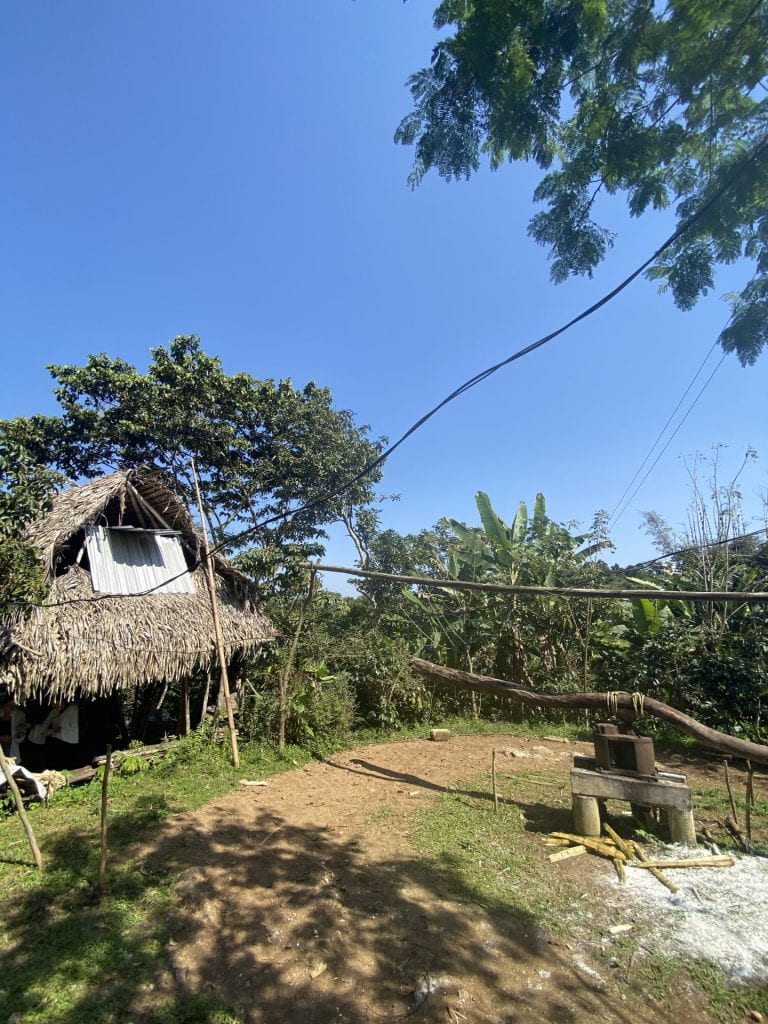
Day 4
Day four’s morning activity was caving! I had done some caving in New Zealand, but this was a very different experience. It was quite hot and humid, and the roof of the cave was quite high. The only time that I felt the slightest bit claustrophobic was when we had to do some ‘crab-walking’ under a few low rocks! The whole experience was very chill – I could carry my water bottle in my hand, and the guide wasn’t even wearing a helmet! After a very steep walk back up the hill to our truck, we headed to see the local pyramids. It was interesting to see the similarities and differences between these ones and the ones we had seen at Teotihuacán. These ones had square ‘niches’ that decorated the sides. There were also a lot of correlations to corn! There were four pyramids around the central plaza; north, east, south and west. Each one also represented a different element – the north was water, the east was fire, the west was wind, and the south was earth. Previously the pyramids were painted in a colour to represent these elements, and these were derived from the different colours of corn! (red, blue, white, and yellow). It was boiling hot, so before going to our next activity, we stopped to get passionfruit ice cream which was definitely needed.
The final for the day was seeing how cinnamon was produced! We went to Isabelle’s house, and she started with a tour of her amazing garden. Like the other gardens we visited, she had a large variety of plants, and she explained that having a diversity of plants meant that they were shaded at all levels, keeping the area humid rather than dry. Banana plants are an essential part of this ecosystem due to their height and large leaves. Cinnamon trees take about 2 years to grow to a good height. Usually, they let one plant grow really big and then partially cut it down. This causes little branches to grow off the stump, which they harvest. Back at the house, we each got given a 20cm long branch of a cinnamon tree. We first lightly scraped off the brown bark to expose the white underneath. After cutting a straight line down the length of the branch, we peeled off the white layer of bark. This can be done in one piece, which rolls up, like the shape we’re used to seeing cinnamon in. After drying in the sun for three days, it turns brown. It was really cool seeing this process and, again, the amount of work that goes into a product that we take for granted. What surprised me was how little of the cinnamon plant was used, only the first layer of bark. We were treated to lunch again, which was a different delicious stew, followed by fresh oranges from Isabelle’s garden. On the way home, we stopped in the city centre of Cuetzalan to have a look around and buy a few things from the handmade markets.
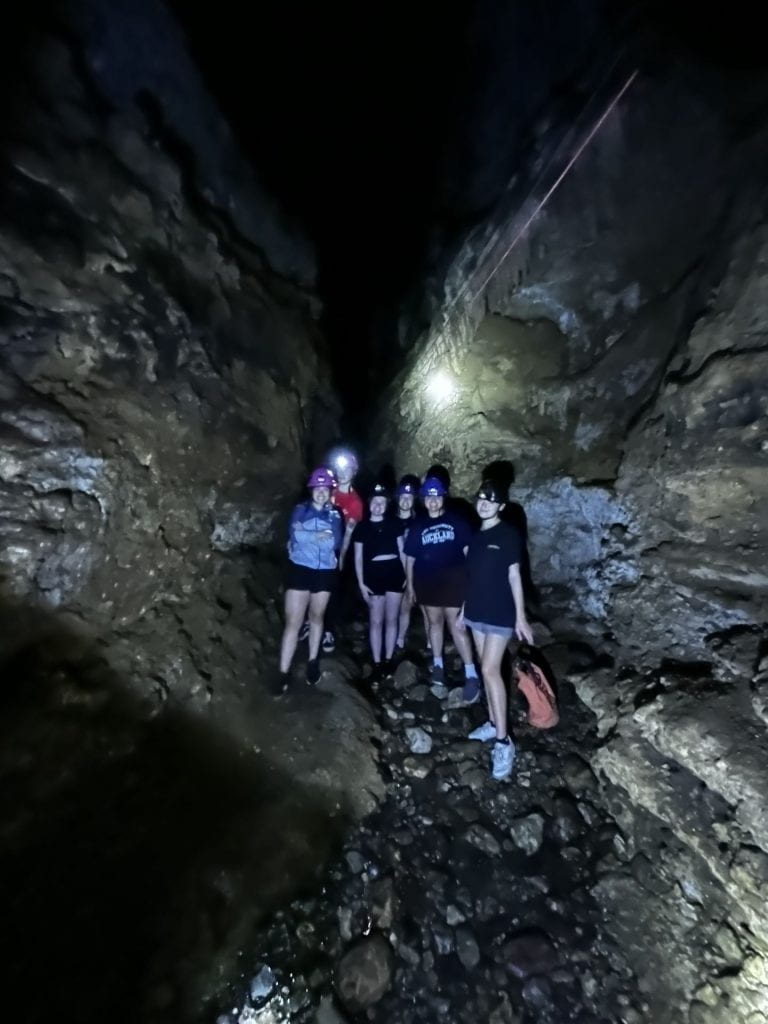
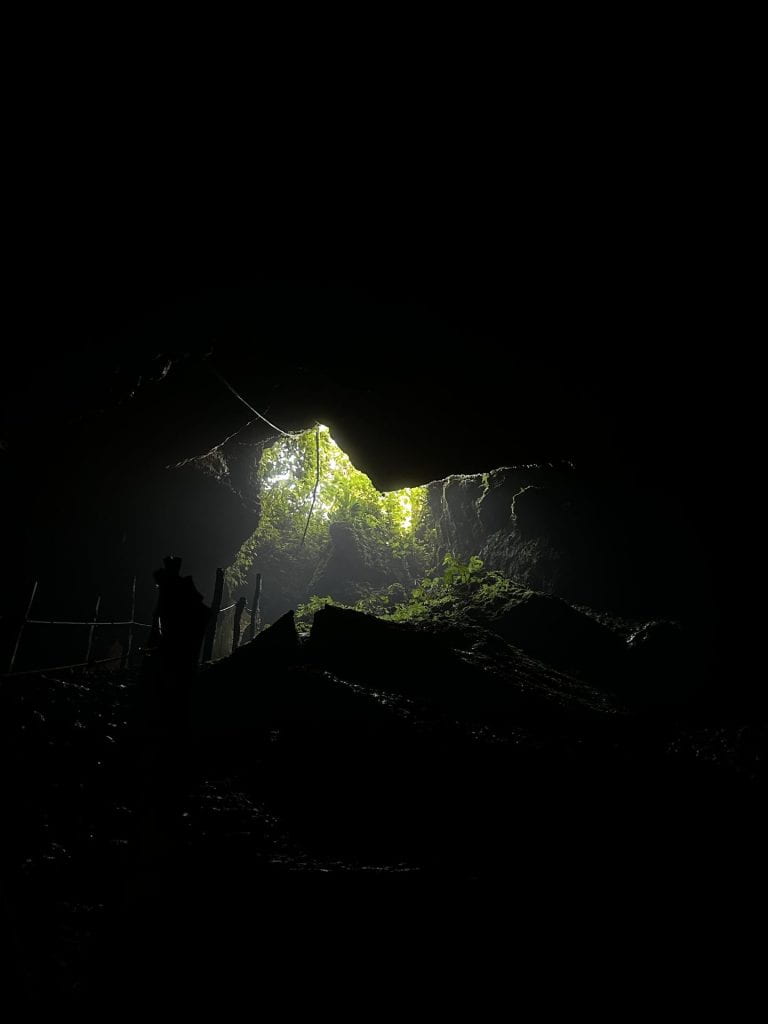
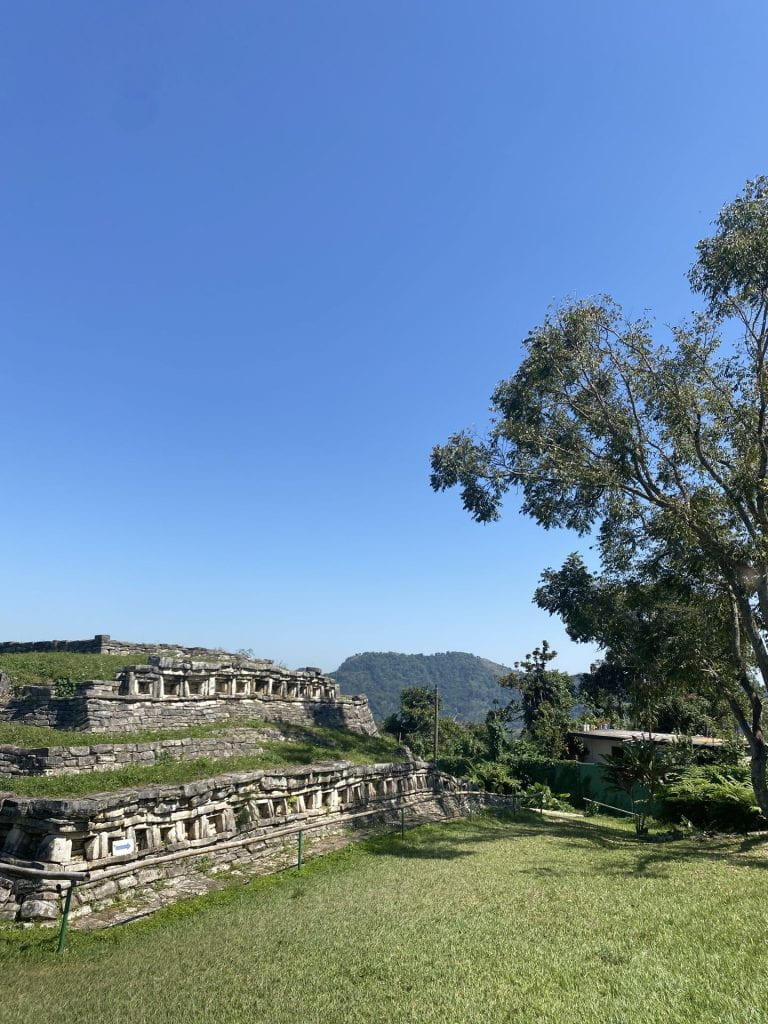
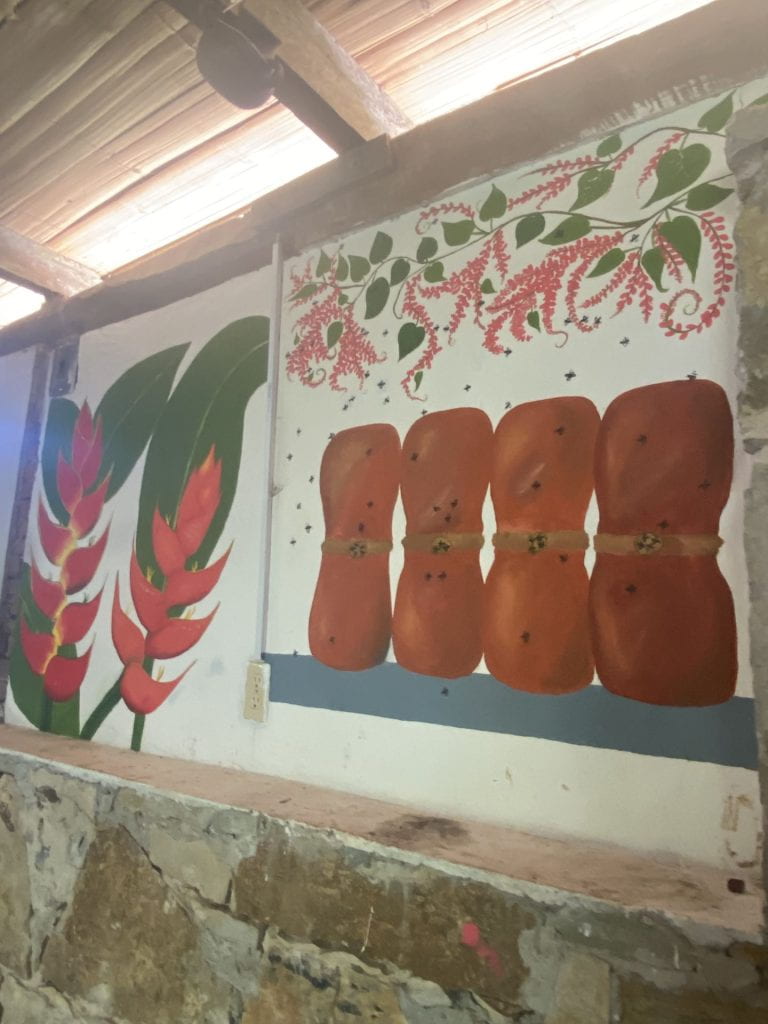
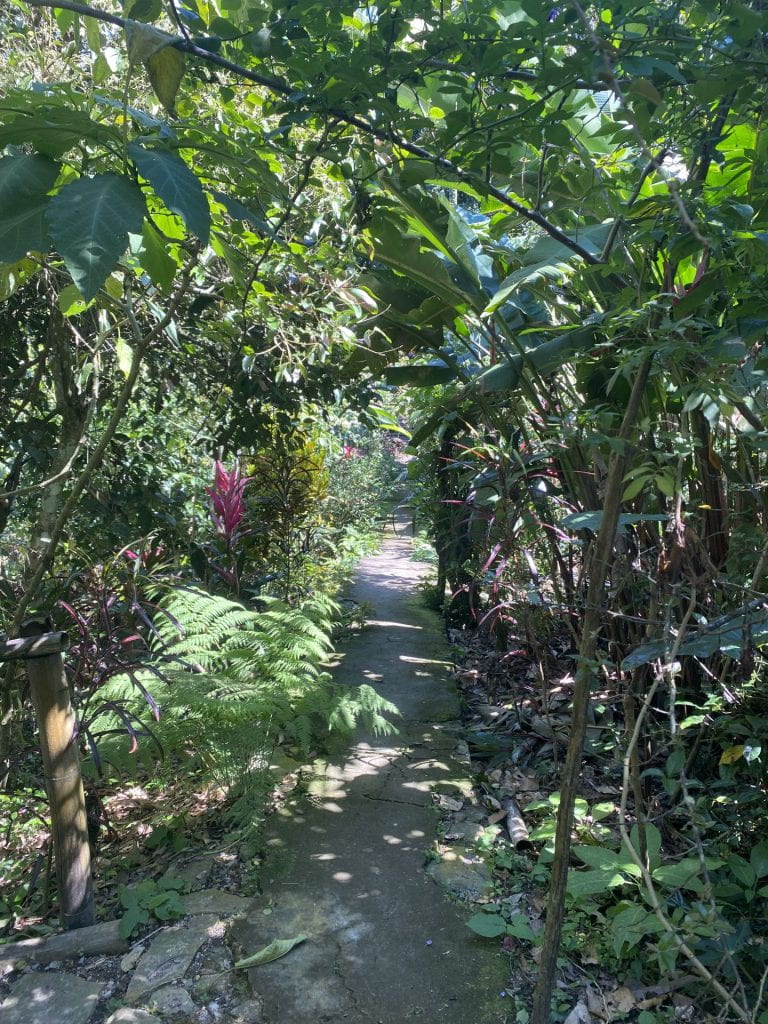
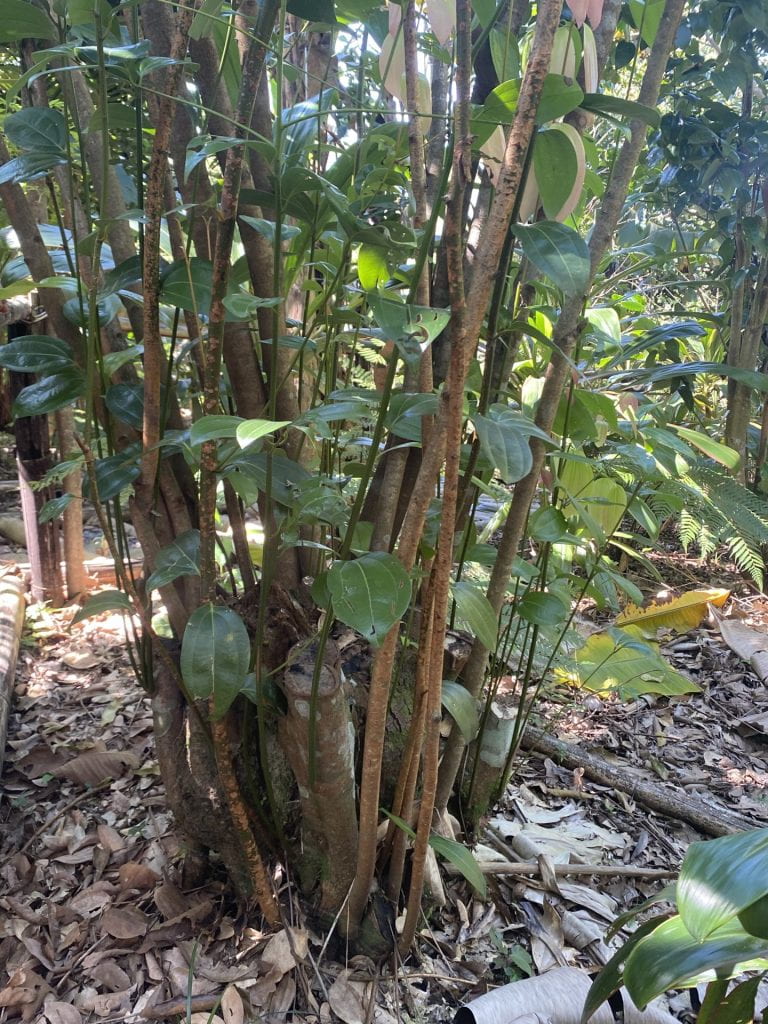
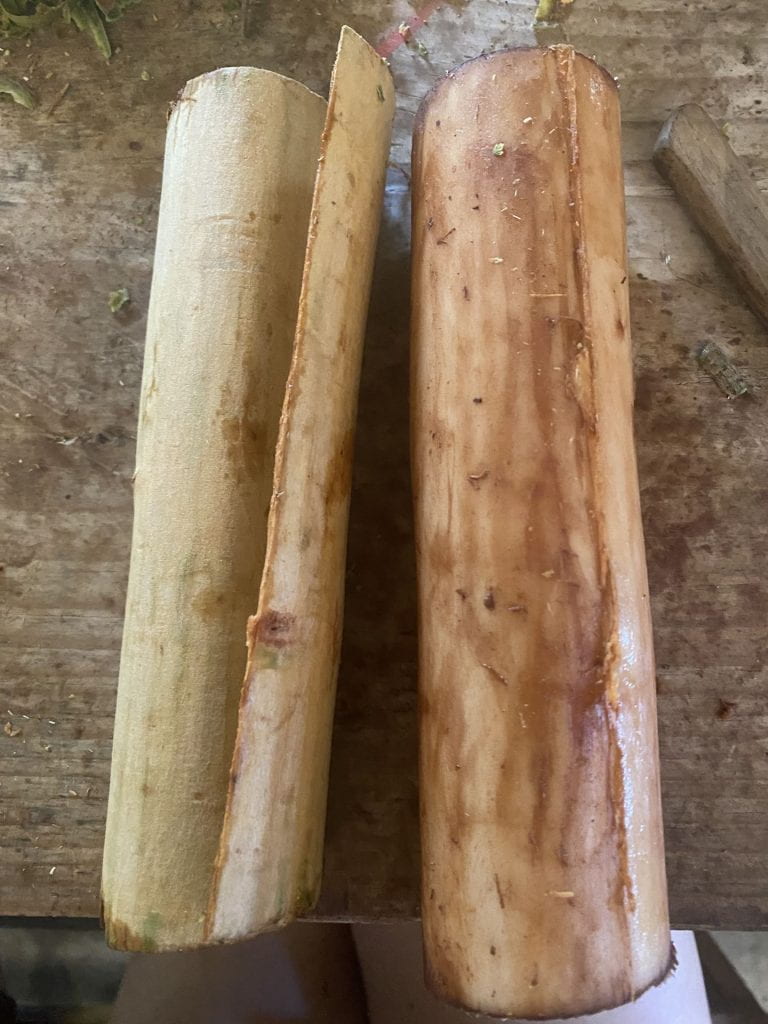
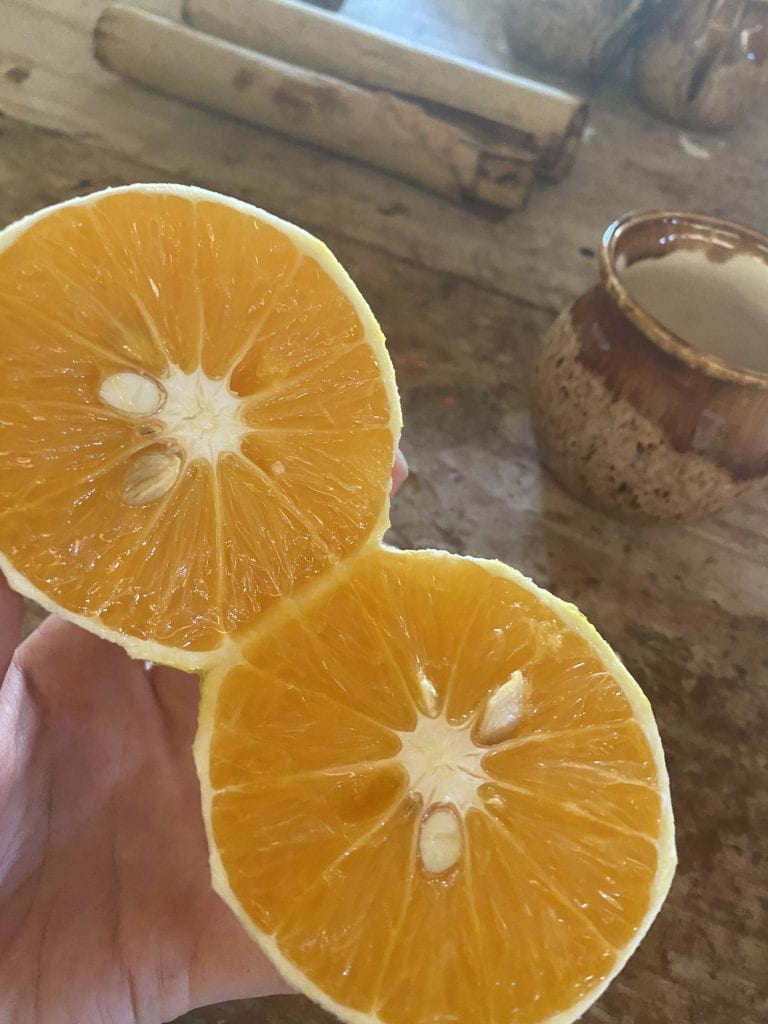
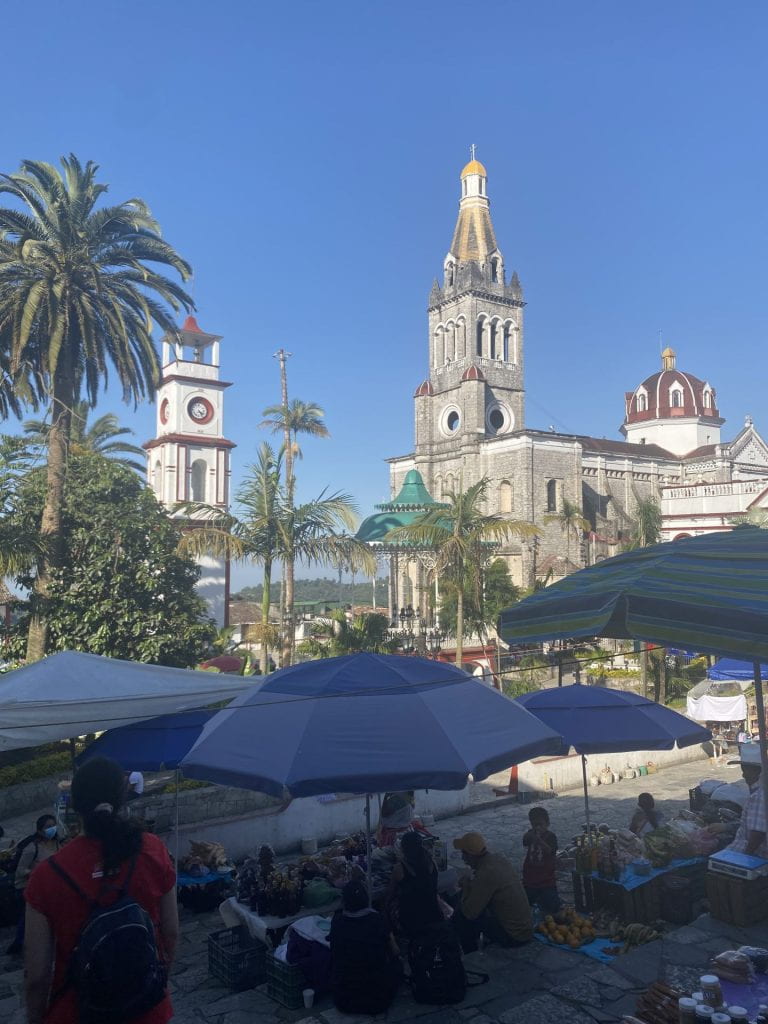
Day 5
After four very jam-packed days, it was time to head back to Mexico City. On the way back, we stopped in the city of Puebla. Following a lunch of tacos and piña coladas, we had a tour around the city. Looking around the municipal hall, the strong European influence was very clear – we could have been anywhere in Europe with the glided walls and painted ceilings. It was still very impressive to see. Afterwards, we walked around the city centre. As it was a planned city, rather than growing organically, the centre was laid out in a grid formation which made it very easy to navigate. All the buildings were brightly painted, but the most colourful street was ‘candy lane’. This street only had different lolly shops, and it’s fair to say that we made the most of the free samples. One of my favourite lollies I tried was a marshmallow infused with tequila eggnog called Rompope. I bought a couple of different flavours for family and friends – champagne, baileys, rompope and tequila with chocolate chip, which I am very excited to try with them. Our next stop was to visit the Talavera shops. Talavera is a blue and white pottery made in a way that is specific to Puebla. We were all really excited about this part of the trip as we had seen Talavera on our travels and wanted to buy some. We were also relying on Puebla for buying a lot of our gifts, and it definitely provided! The only issue with pottery is that it is very heavy, and we were all aware of our limited weight allowance coming back. Finally, we returned back to Mexico City at 8:30 pm, tired but so grateful for getting to do all that we managed to fit into one week.
